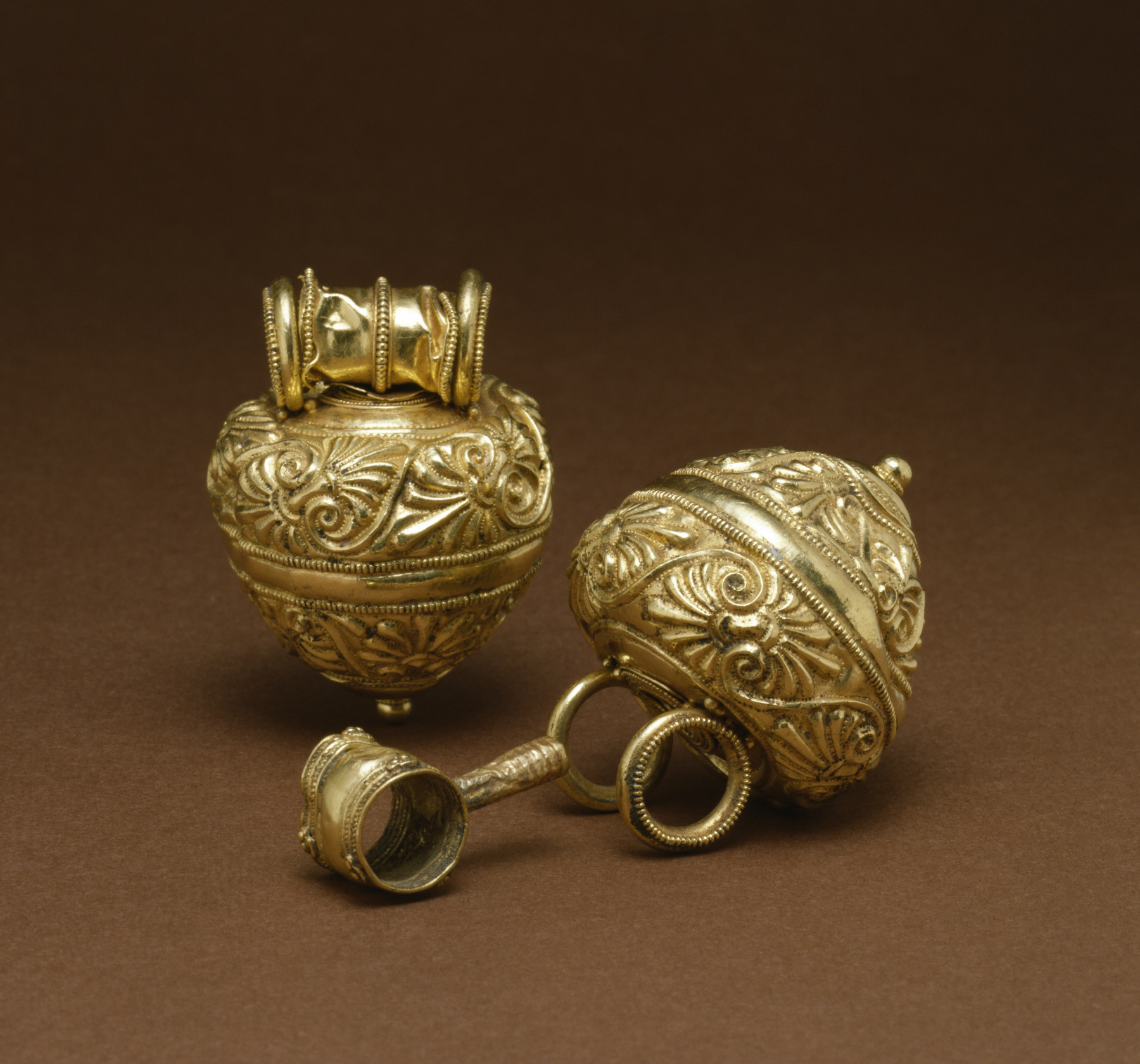Pair of Etruscan "Bullae"
Hollow pendants like these, called "bullae," contained protective charms or perfume and were worn as amulets, especially by children. A stopper at the top, held in place by a chain or cord, secured the contents. The heart-shaped bodies of these Etruscan "bullae" are decorated with detailed palmettes and tendrils worked in repoussé and has intricate smooth and twisted wire applied to the surface.
Henry Walters purchased the first "bulla" in 1930; its companion was discovered 34 years later and bought by the museum to reunite the pair.
Provenance
Provenance (from the French provenir, 'to come from/forth') is the chronology of the ownership, custody, or location of a historical object. Learn more about provenance at the Walters.
57.574: Galleria Sangiorgi, Rome, [date and mode of acquisition unknown]; Henry Walters, Baltimore, 1930, by purchase; Walters Art Museum, 1931, by bequest.
57.1950: Ars Antiqua sale, 7 Nov. 1964, lot 141 [date and mode of acquisition unknown]; Walters Art Museum, 1964, by purchase [William H. Schab as agent].
Geographies
Italy (Etruria) (Place of Origin)
Measurements
57.574: 13/16 in. (2 cm);
57.1950: 1 5/8 in. (4.2 cm)
Credit Line
Acquired by Henry Walters, 1930 (57.574), Museum purchase with funds provided by the S. & A. P. Fund, 1964 (57.1950)
Location in Museum
Not on view
Accession Number
In libraries, galleries, museums, and archives, an accession number is a unique identifier assigned to each object in the collection.
In libraries, galleries, museums, and archives, an accession number is a unique identifier assigned to each object in the collection.
VO.67 (57.1950, 57.574)


